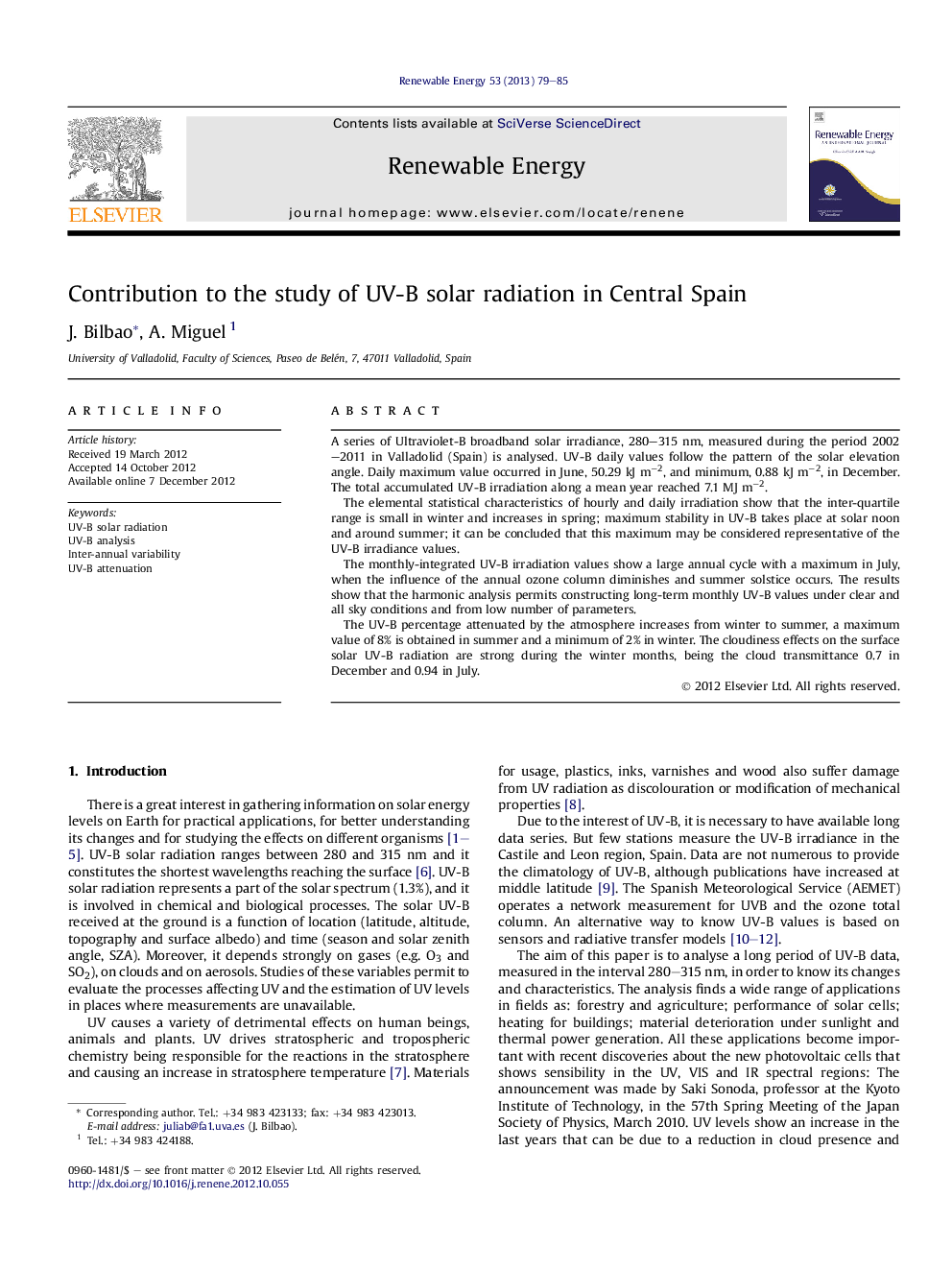| Article ID | Journal | Published Year | Pages | File Type |
|---|---|---|---|---|
| 300491 | Renewable Energy | 2013 | 7 Pages |
A series of Ultraviolet-B broadband solar irradiance, 280–315 nm, measured during the period 2002–2011 in Valladolid (Spain) is analysed. UV-B daily values follow the pattern of the solar elevation angle. Daily maximum value occurred in June, 50.29 kJ m−2, and minimum, 0.88 kJ m−2, in December. The total accumulated UV-B irradiation along a mean year reached 7.1 MJ m−2.The elemental statistical characteristics of hourly and daily irradiation show that the inter-quartile range is small in winter and increases in spring; maximum stability in UV-B takes place at solar noon and around summer; it can be concluded that this maximum may be considered representative of the UV-B irradiance values.The monthly-integrated UV-B irradiation values show a large annual cycle with a maximum in July, when the influence of the annual ozone column diminishes and summer solstice occurs. The results show that the harmonic analysis permits constructing long-term monthly UV-B values under clear and all sky conditions and from low number of parameters.The UV-B percentage attenuated by the atmosphere increases from winter to summer, a maximum value of 8% is obtained in summer and a minimum of 2% in winter. The cloudiness effects on the surface solar UV-B radiation are strong during the winter months, being the cloud transmittance 0.7 in December and 0.94 in July.
► UV-B solar radiation shows small values of inter-annual variability in summer months. ► Maximum stability of hourly and daily UV-B radiation takes place at solar noon in summer. ► The atmospheric transmission of UV-B solar radiation changes from 0.7 in December to 0.94 in July.
